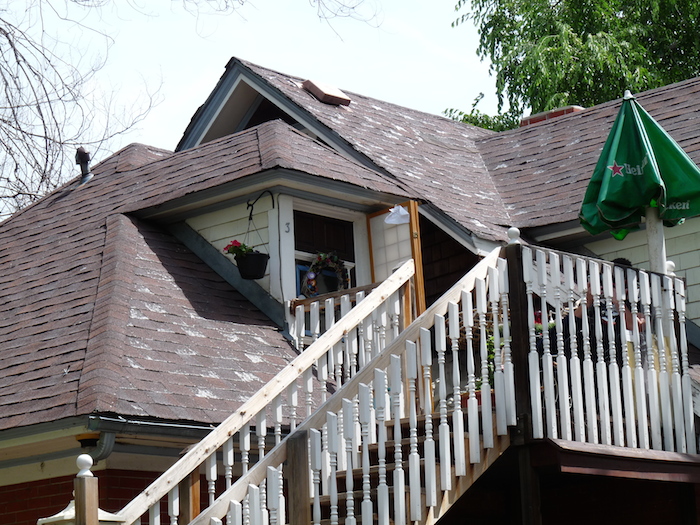MANUFACTURER'S WARRANTY
Warranties are often misunderstood by inspectors. Very seldom will any type of installation void a manufacturer’s warranty. For example, failing to properly ventilate the underside of the sheathing as per the manufacturer’s recommendations will not void the warranty, but it may lead to premature failure.
When a claim is made against the manufacturer, a couple of shingles will be removed from the roof and mailed to the manufacturer. The manufacturer will test the shingles to determine whether the problem was created by the manufacturing process. Testing does not vary with shingle appearance. If the problem was not caused by the manufacturing process, the claim will be denied.
Only in a very few situations typically related to high-end shingles will the installation affect the manufacturer’s warranty.
"We don't care if you use tissue paper for underlayment and thumbtacks for nails..." Quote from a GAF tech support person.
Some examples of manufacturing defects:

Ferrous metal contamination

Excessive wear (white portions are the fiberglass mat)

Shingles are spliced to keep production moving, but spliced shingles should not be installed on a roof
LIMITED COVERAGE
Manufacturers' warranties may cover only the cost of new shingles, or a portion of their costs, but not the cost of labor for installation of new ones, especially further along in the warranty period. Labor costs for installation are affected by the roof pitch. There's typically an extra charge for steeper pitches, which may not be included in the original warranty. Roof replacement may require removal and disposal of the existing shingles, and that may not be covered, either. Some manufacturers' warranties cover installation errors, but they require installation by manufacturer-certified installers using the manufacturers' products exclusively, from the underlayment on up.
PRORATING WARRANTIES
Warranties, especially longer ones, often prorate to zero at the end of the warranty period. This would mean that, if, in the 30th year of its life, a roof with shingles warranted for 40 years failed, the warranty may cover only 25% of the roof's total replacement cost, since the shingles were already 75% of the way through their warranty period. Even less than that time period might be covered, if that's how the warranty was written. A lifetime warranty does not mean that the roof will be covered for replacement cost as long as the homeowner lives in or owns the home.
WIND WARRANTY:
The wind warranty is almost always a separate section within the overall manufacturer's warranty, and the time period covered is generally shorter than that of the overall warranty. The average wind warranty for 20- to 40-year shingles is five years. For 50-year shingles, it’s 10 years. This is because shingles become less wind-resistant as they age.
CONTRACTOR'S WARRANTY
The second type of warranty available is the contractor’s warranty. It covers proper installation methods and workmanship. The terms of a contractor’s warranty may be negotiable, so they also vary. Jurisdictional requirements may influence the terms. Jurisdictional requirements include those instituted by a city, county, state or provincial government.
Some contractors offer an extended warranty as a marketing tool. Homeowners tend to believe that this shows confidence on the part of the contractor in the ability of the installers. More often, it’s because the contractor knows that any problems due to improper installation are likely to appear during the first five years after installation, when the home would still be covered by a standard contractor’s warranty anyway.
For a more detailed explanation of shingle warranties, Click Here!
